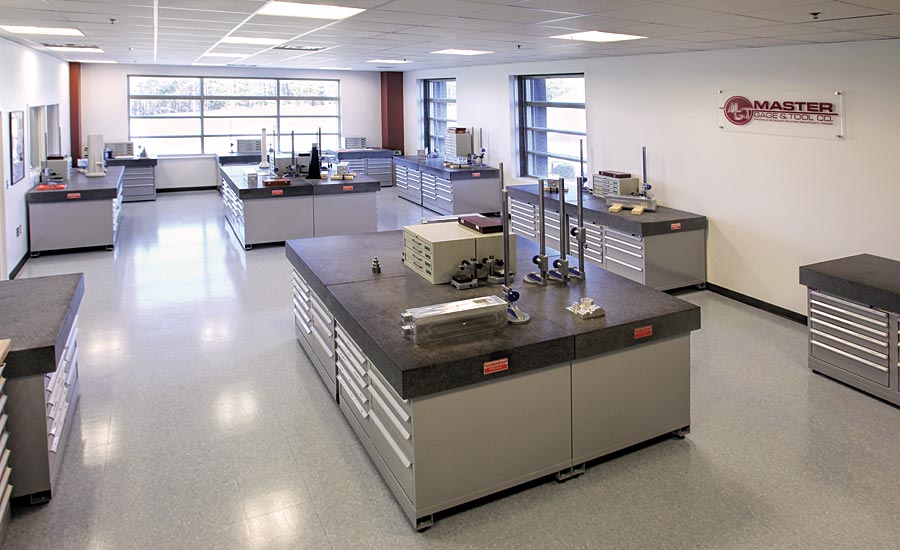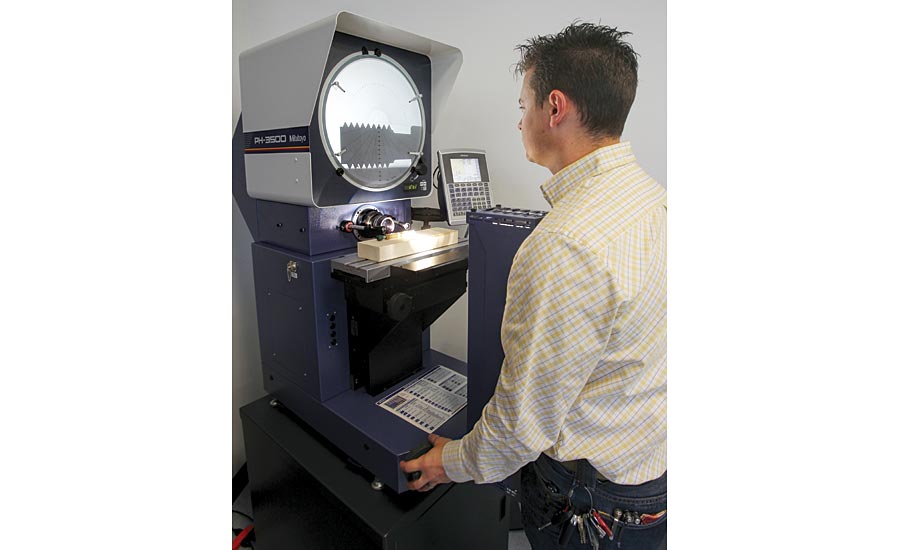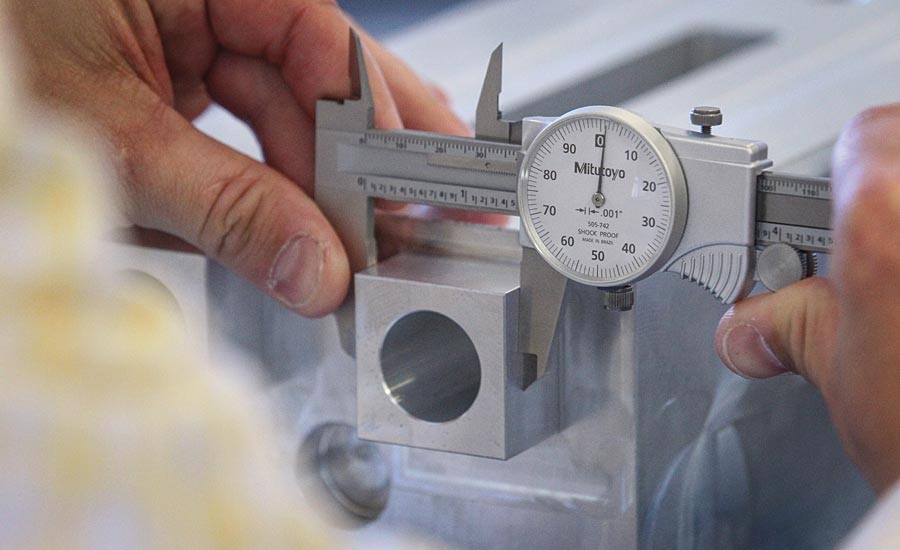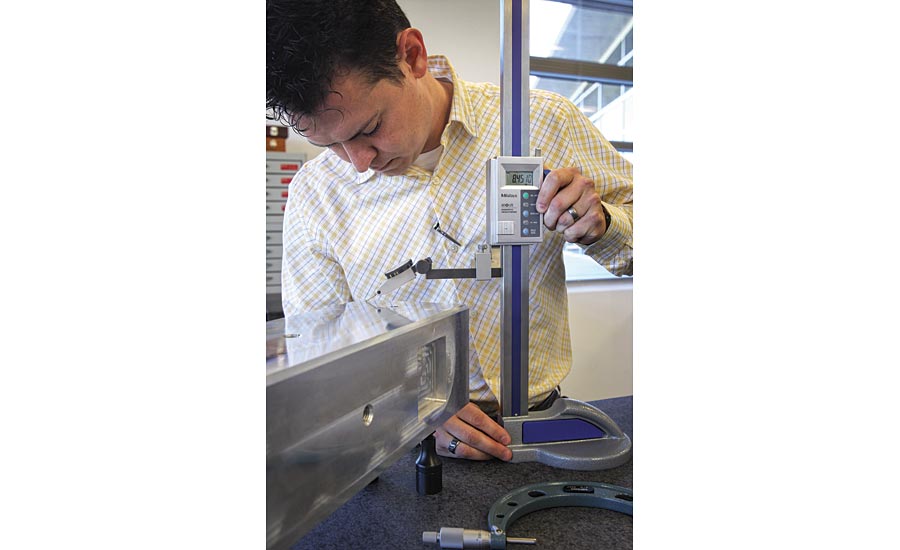Ask a quality engineer how they were introduced to metrology or inspection, and they’ll often answer that it wasn’t during their coursework, but in the field. It reflects the manufacturing world’s problem with visibility and messaging, and an important insight into why the term “skills gap” has been a buzzword for several years.
A common example: “It was my first job out of college,” recounts Jim Spichiger, ASQ Inspection Division chair. “I was employed by the Army as a product assurance engineer. I had no idea what that meant. They hid the word ‘quality.’ But it was guaranteeing product assurance. I worked on missile warheads, and that led to me back to in the regular world working as a quality engineer, and here I am now a certified Six Sigma black belt.”
It’s a story often repeated, like the number of times quality professionals explain that metrology is not the study of weather.
So, careers in quality and other manufacturing disciplines are there, but do people know about them?

The bench lab at Danville Community College features training parts across 20 stations, each with its own set of basic equipment such as calipers and micrometers. Equipment includes height sets, square masters, and gage blocks, among others. Photo provided by Danville Community College.
“I’m a big believer in quality and manufacturing and engineering, but I’m also a big believer in economics,” says John Marcin, vice president of engineering and business development for Verify, Inc. “If the opportunity is there, if the demand is there, it’ll get filled.
“You have to sell it to the people to make that field attractive through compensation, through job satisfaction, and through company culture. There’s no such thing as a long-term shortage. In economics, things work their way out. More demand will enter the marketplace. That’s opportunity, but you’ve got to recruit.”
Teresa Whitacre, a senior quality engineer with Leonardo DRS, and an ASQ Fellow, has seen demand outstrip the supply of new engineers, firsthand. “We have a heck of a time finding and hiring qualified engineers,” she says. “We’ve gone to some of the colleges to do career days, and we hire almost everyone we can find.”
Young people lucky enough to be led down the path can find opportunity and rapid advancement.
Lucy Ackland, a senior development engineer with Renishaw, was introduced to engineering as a middle schooler during a career weekend. Motivated, Ackland later left high school at 16 to look for college courses more focused on engineering than what her school in Stroud, England, provided. She came across a local newspaper advertisement from Renishaw offering apprenticeships. Following the work-study program, during which she also received her college degree, Ackland gained full employment with the company, where she has spent her entire career.
Now, she also works to recruit young people as a liaison for Renishaw’s new pilot program at Greenville Technical College in Greenville, SC, named the Center for Manufacturing Innovation. The 100,000 square-foot facility has a metrology lab, prototyping lab, pneumatics/hydraulics lab and additive manufacturing area. Students take courses in industrial automation, robotics, CNC machining, manufacturing management, metrology/quality management, process design and Lean Six Sigma, among others. Students earn a two-year degree and are typically funneled into manufacturing jobs where the average salary is currently $63,936 for associate degree holders in the county.

A metrology student inspects thread details of a go-no gage on the optical comparator. Photo provided by Danville Community College.

A metrology student inspects a training part supplied by industry partners. Photo provided by Danville Community College.
Diversity and Recruitment
Like in the U.S., there are scores of manufacturing and engineering jobs in the U.K. that will need to be filled as baby boomers retire. Across the pond, there will be an annual need for 186,000 people with engineering skills annually through 2024, according to the Engineering UK 2017 study. In the U.S., more than half of 3.5 million manufacturing job openings will go unfilled over the next decade, according to The Manufacturing Institute, including both skilled technicians and college educated engineers. The gap grows as boomers retire and industry recovers from recession-era job losses. Young people are also reluctant to enter manufacturing careers due to a negative perception of the industry, lagging STEM-related education and limited technical training opportunities in parts of the country.
Claims that the unfilled jobs are due to a “skills gap” are also rebutted by competing research that organizations have been lax in recruitment and hiring, and haven’t increased wages since recessionary dips. Either side of the argument could likely agree that recruitment should be emphasized, and that private industry can play a role in training the workers, either internally, or through partnerships with community colleges like Greenville. For workers in the right place with the right qualifications, it can be a good market.
“There are not enough engineers as there is,” Spichiger says. “I know, personally, from having children in that age group, the engineers are being scarfed up. People who follow that technical path are not challenged when they graduate looking for a good paying job right away, right out of college. And I see that firsthand.”
A key strategy to solve recruitment challenges will be to grow the supply of potential workers by closing the gender gap. In both the U.S. and the U.K., just 13% of engineering jobs are held by women.
“I think the best way in the U.S. and the U.K. that we can fulfill the manufacturing skills gap is by encouraging more diversity in engineering and manufacturing,” Ackland says. “The percentage of women in manufacturing and engineering is poor. But there are other countries doing much better at it. So it’s definitely achievable, and the industry, education and government need to do more to push towards more diversity within these traditionally white male dominated fields.”
That effort needs to begin early, she says, encouraging girls in the same way that boys are to build things and excel in STEM (science, technology, engineering and math) coursework. One recent study by U.S. News & World Report showed that the gap is already well-formed by high school. In 2014, about 3% of high school females reported an interest in engineering, compared to 31% of males.
“I think what’s really relevant here is that we are able spark an interest in technical fields early as children are developing and making decisions towards which type of career path they want to follow,” says Delfin Lorenzo, VP of worldwide manufacturing for Ethicon, part of Johnson & Johnson Medical Devices Companies. “And we have a number of programs already in place in which we are reaching out to not only higher-level academic institutions, but earlier.
“And we have very specific goals as a company to reach even more people in those early engagement programs so we can spark that interest in technical careers. Because, afterwards, the interest has already been generated, and students will already have a path.”

A metrology student works on a surface plate layout inspection of a training part supplied by industry partners. Photo provided by Danville Community College.
Modern Workplace Culture
Company culture evolves slowly, but offering a workplace with modern attitudes can help manufacturers compete with Silicon Valley for young engineers, experts note.
“The technology [in aerospace] certainly is the most advanced,” Marcin says, “but the culture is maybe not as contemporary. Company culture is a big process and a big factor in the decision making process for new hires. Aerospace and defense is a little behind on that, relative to other industries. We could do a better job.”
Even within manufacturing, workplace attitudes are noticeably different between the high-tech, automation-focused organizations and the old-school steel or glass makers, Teresa Whitacre says. In those old-fashioned workplaces, “It’s definitely like ‘If you’re not a white male, you don’t fit here.”
Whitacre has seen progress since the beginning of her career.
“I see a lot of encouragement towards it,” she says. “I do see some younger women going into the field. It’s getting better, but it’s not improving at a fast rate.”
That has to improve, obviously, for workplaces to mirror the outside world.
“When we are able to bring more diverse perspectives, we’re going to be more responsive to our work customers,” says Ana Lopez, Manufacturing VP, cardiovascular and specialty solutions, Johnson & Johnson. “We cannot have only one kind of (worker) when our customers are so diverse. So it’s very, very important that we are a reflection of what our customers are, and that we include diversity in the way that we do business, the way that we do manufacturing. Anything that we do in our day-to-day activities has to be a reflection of our world and what is happening outside.”
Public-Private Partnerships
The issue of visibility is mirrored in the market for technicians and mid-level skilled workers who find training at community colleges and technical schools, such as Greenville Technical College. If a potential worker is lucky enough to live near modern classrooms that provide high-tech training, a recruiter might have pointed them in the right direction. Otherwise, the idea of a manufacturing job might sound like a thing of the past. Greenville is not alone in combatting those issues. Danville Community College in Danville, VA, also launched a metrology program two years previously.
Joshua Worthley teaches dimensional metrology at the school. The program is in its third cohort of students. Almost every single employable student who has completed the two-semester program, and has put forth effort to find a quality or inspection related position, has found one in the greater Danville, VA, area, he says. The lab has a maximum capacity of 20 students per cohort. But he says that even if it was filled to capacity, it still wouldn’t totally satisfy the need for skilled workers in the area. The college is producing recruitment videos to draw high school students, as well as organizing tours of factories like the spotless, state-of-the-art Rolls-Royce plant to combat perceptions of manufacturing being dirty or outdated.
“There’s one employer in particular, if I had 20 students they’d take all 20 of them, every year,” he says. “In their organization, there are a few thousand people on that campus and several hundred in their quality department. And that’s not to mention all the other manufacturers in the area, as well.”
In the next year or two, Worthley says he hopes to add two semesters of non-destructive testing training after the metrology, precision machining, and welding programs move into a completely renovated space.
“The industry around us is dying for that kind of technician,” he says. “They’re pulling them from wherever they desperately can.”
In Danville, Worthley’s program has benefited from donations of equipment, materials, and curriculum development support from local manufacturers, as well as local and federal grants.
“Some companies get it, and say ‘we need to invest in the training resources, because we can’t hire these people off the street.’ Some are struggling to do it and haven’t invested in that training process. Or they’re working with their local colleges to help them out, as well. So it feels like, to me, it depends on where you are in the country. If you want to pull manufacturing jobs back into your local area, you need to provide a robust pipeline of skilled workers.”
In addition to earning a Career Studies Certificate, students who complete the program also get the opportunity to participate in ASQ’s Certified Quality Inspector Apprenticeship Program. It allows students who have taken a course like the one in Danville to bypass the two-years work experience requirement needed to take the exam. If the students pass, they become ASQ certified. ASQ is looking to expand the program beyond Danville Community College, Vincennes University and others.
“The apprenticeship program is fantastic,” Worthley says. “It’s just a wonderful thing that the students can get involved in.
“Selfishly, when someone thinks of quality-related education five years from now, I want them to think of Danville Community College. That’s my goal. But, globally, I want quality and metrology education to not get shoved under a rug somewhere.”







